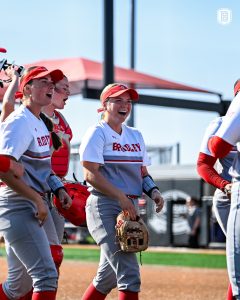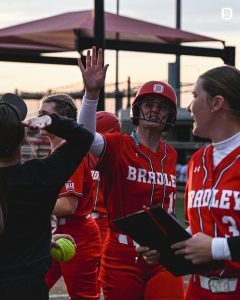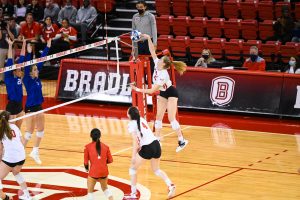In the women’s basketball head coach’s office, head coach Michael Brooks surprised Madison Dellamuth with a pop quiz over what to do when faced with different defenses, while running the point.
Brooks began his quick review session, fires off different questions regarding what to do when Dellamuth sees a 2-3 zone, a 4-1 zone and man defense.
The freshman point guard passed the quiz, and Brooks continues on into the other room, then sits down for an interview.
Dellamuth understands why Brooks quizzed her, as any coach would want to make sure their freshman point guard was on top of a Division-I offense, only six months removed from high school.
“[I’m] still getting it,” Dellamuth said. “We still go through stuff out of practice. [Which] helps, but I don’t have it 100 percent yet.”
It should be pointed out that running the point in Brooks’ offense is no easy task, nor is manning any position for that matter.
The offense the women’s team runs is built on speed and with that speed comes the right kind of punishing practice.
“It’s a high-energy and high intensity practice,” Brooks said. “We run more than anybody… We work our way in practice where we’re tired in the beginning.”
Brooks wants to challenge opponents to play to the tempo that he sets from the beginning of the game to the end, often by sending in substitutions in waves, similar to hockey with a line change.
Another way that Brooks sets a faster tempo is by having very few post players on the court.
“Speed kills, plain and simple,” Brooks said. “I don’t like big ‘bumb-e-quats’ laboring up and down the court.”
However, not having a low post presence can really hurt a team in terms of rebounding and post scoring.
Brooks makes up for this by having different players learn different positions on the court, and by taking advantage of mismatches as they arise.
“We want people to know different positions and be able to use them where we see them in the course of a game,” Brooks said. “If they have someone smaller on them, then they need to know the post box.”
Although Brooks has been running this style of offense at Bradley for the three years he’s coached on the Hilltop, he hasn’t been able to fully implement his scheme.
Last year, the Braves only had nine players total on their roster, which made it almost impossible to run Brooks’ offense.
“We put in a slow-mo version of what we wanted to do,” Brooks said. “We only had two people [that could run the offense]. Now, we have 12.”
The main reason Brooks wasn’t able to employ much of his offense in the 2013-2014 season, was because the main scheme he runs is the triangle offense.
The triangle features a guard, center and wingman in the shape of a triangle on offense, and it relies on the fast-pace of the game, which was tough to do with only nine players.
This scheme is the same style that legendary head coach Phil Jackson applied, winning him multiple NBA championships.
While it is only a watered-down version of the triangle, Brooks knows it’s not easy to learn.
“Triangle doesn’t get into place in one day,” Brooks said. “It takes years and years to understand the subtle nuances of it. Right now we’re on the basic layers and they’re doing a pretty good job.”
With the newcomers playing now in a form of the triangle offense, and six being freshmen, it’s not an easy concept to grasp right off the bat.
“The stuff we run isn’t too hard to learn,” Dellamuth said. “It’s just on the fly, [like] reading and remembering all of our sets and what’s best to go out of.”
With two games under their belts, and a showdown in Norman with Big 12 juggernaut Oklahoma waiting in the wings, Brooks and Dellamuth are looking forward to putting their offense on display in a hostile environment.
“I’ve got to see us take a step in the right direction against Oklahoma,” Brooks said. “Oklahoma doesn’t like to play fast…At the same time, we’re ready for anything.”








